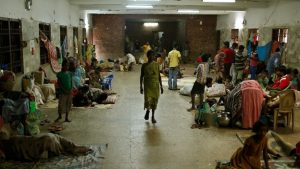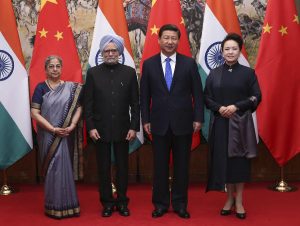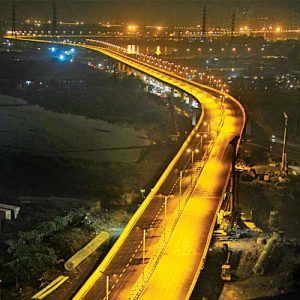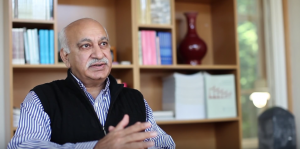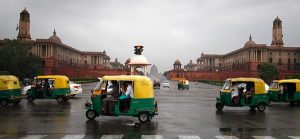At the Frontier of the Middle Income Trap: Remarkable Parallels between India’s and Indonesia’s Elections
Memo #274 By Yves Tiberghien – yves.tiberghien [at] ubc.ca India and Indonesia are both facing crucial elections this year: May for India and July for Indonesia (April for parliament). Although contexts are different and their ties are rarely explored, they face remarkably similar economic issues. Both are seen as successful emerging powers of the 2000s […]
Saving Lives in Odisha: Disaster Mitigation Comes of Age in India
Memo #250 By Asim Arun – asimarun [at] hotmail.com The recent typhoon in the Philippines, and growing threat of climate change it may represent, has once again taught us the necessity of disaster preparedness. It was just over a month ago, on October 12, 2013, that the category-five Cyclone Phailin slammed into India’s eastern coastal states […]
Keeping Neighbours Closer: Beijing’s Geopolitical Pitch
Memo #249 By Jargalsaikhan Mendee – mendee [at] alumni.ubc.ca Lately, Chinese leaders have been busy bolstering relations with their immediate neighbours. As evidence, the Prime Ministers of India, Mongolia, and Russia arrived in Beijing for bilateral meetings with China’s President Xin Jinping and Premier Li Keqiang on the same day—October 24, 2013. While Russian Prime Minister Dmitri […]
Two Challenges for the Mumbai Eastern Freeway: Congestion and Equity
Mumbai’s new Eastern Freeway (MEF) was opened to the public on June 13. The 13.59 km publicly funded MEF is meant to ease congestion between outlying suburbs and downtown Mumbai.
India-Bangladesh Border Issue Unresolved
Memo #231 By Glen Hamburg – glenhamburg [at] gmail.com An international enclave is a piece of one state’s sovereign territory entirely surrounded by the territory of just one other state. Nearly 200 such land-locked islands lie along India’s border with northern Bangladesh. The obscure remnants of eighteenth century tax arrangements, these enclaves (chhitmahals in Bengali, […]
India: Problems and Promise (Video Interview with M.J. Akbar)
Modern India, which emerged out of British colonial rule in 1947 bloodied but unbowed by partition, had two massive challenges: the protection of its unity, and the elimination of poverty. More than six decades later, after surviving serious insurrections both in its North East and North West, India has largely resolved the threat from sectarian secessionism. But it still struggles under the weight of one third of the world’s poor. In 1947 this poverty was stark: in the last years of British rule, an estimated three million died of famine in Bengal alone. Such horrors are a thing of the past, but the tragedy of under-nourishment and subsistence-level existence remains a reality for 30% of the population.
Amid Concern about Women’s Safety, New Delhi Seeks Female Auto-rickshaw Drivers
The gang rape of a young woman in a bus in New Delhi last December sparked a national debate about women’s safety on India’s public transport systems. The New Delhi Transport Department responded by reserving 1,000 corporate auto-rickshaw permits for female drivers in the hope of making autos safer for female passengers.
Bureaucratic Red Tape Chokes Free Markets in India
India auctioned 3G licenses for USD $14.78 billion in 2010, a bonanza for a government staring at a large fiscal deficit and trying to promote inclusive growth through a host of populist social schemes. With new telecom auctions scheduled soon, the government hopes to generate more money to pare its fiscal deficit, and bolster its reformist credentials to foreign and domestic investors.
Collective Protests in China and India: Unexpected Similarity?
Collective protests against corruption and land grabs are widespread in both China and India. The official Chinese Academy of Social Sciences reported that the government spent $110 billion on containing these and related popular protests in 2011, more than the defense budget. Many argue that disruptive protests erupt because there are no effective institutional channels, such as the judiciary, for expressing grievances in China. However, in neighboring India, the world’s biggest democracy where such channels do exist, people similarly express their discontent through disruptive protests. Though not yet systematically counted, disruptions, both violent and non-violent, are an essential characteristic of Indian democracy.
Pocket Social Networking in India – SMS GupShup Expands
Memo #190 – The communication revolution has spread to small towns and even villages in India through a Twitter-like Small Message Service (SMS) social marketing networking alternative called GupShup. The low-cost text messaging service for phone, web, or mobile communication facilitates “pocket social networking” for people without smart phones. It is estimated to currently process two billion messages per month in India, compared to 480 million a year ago.

